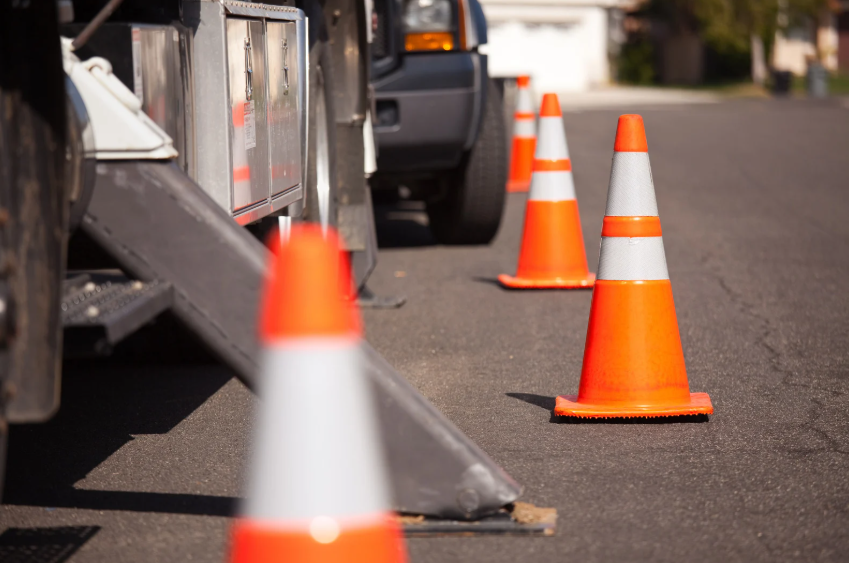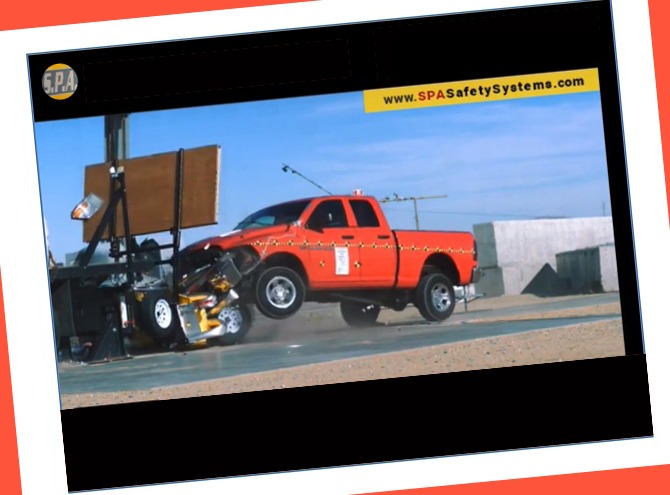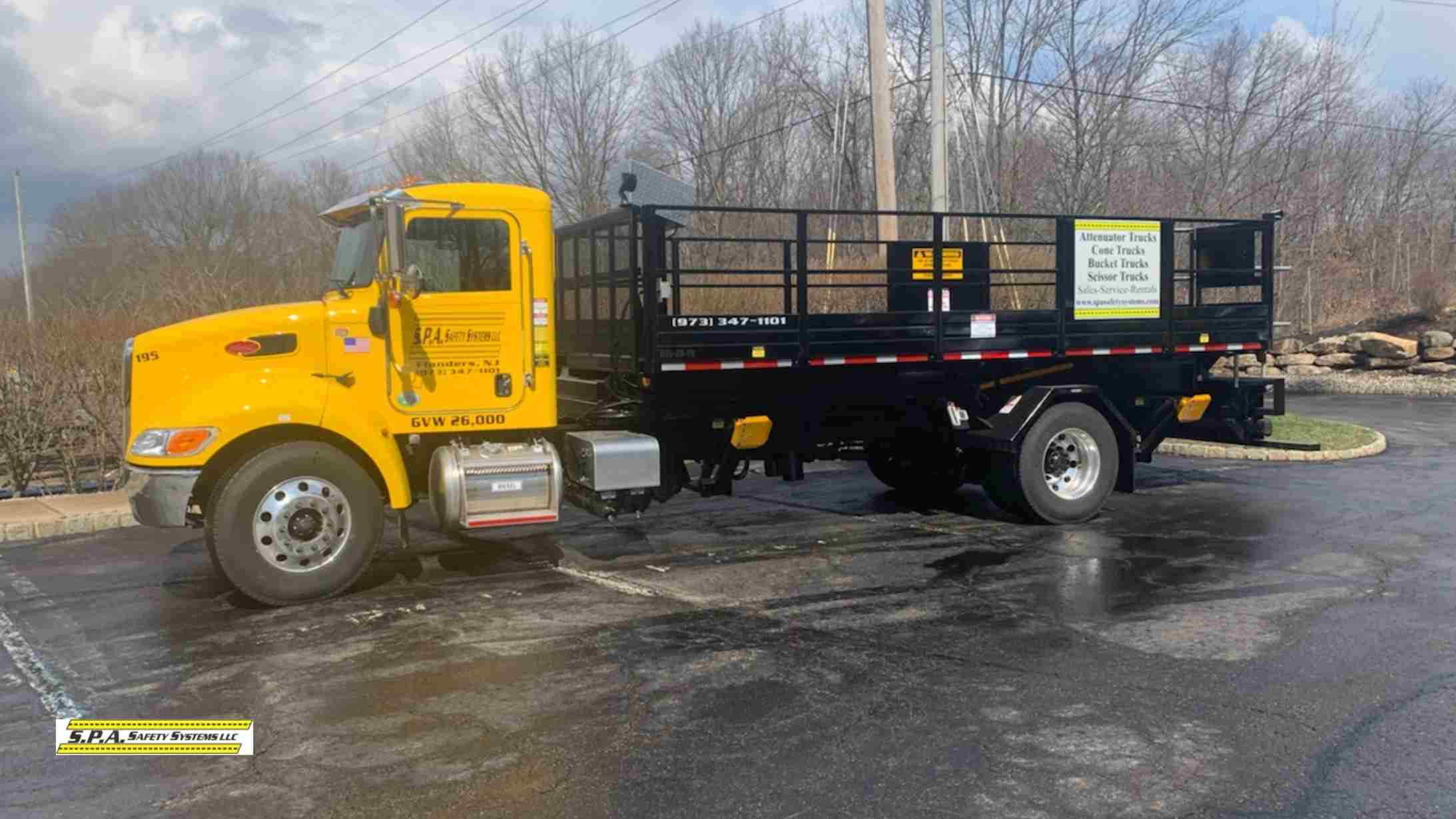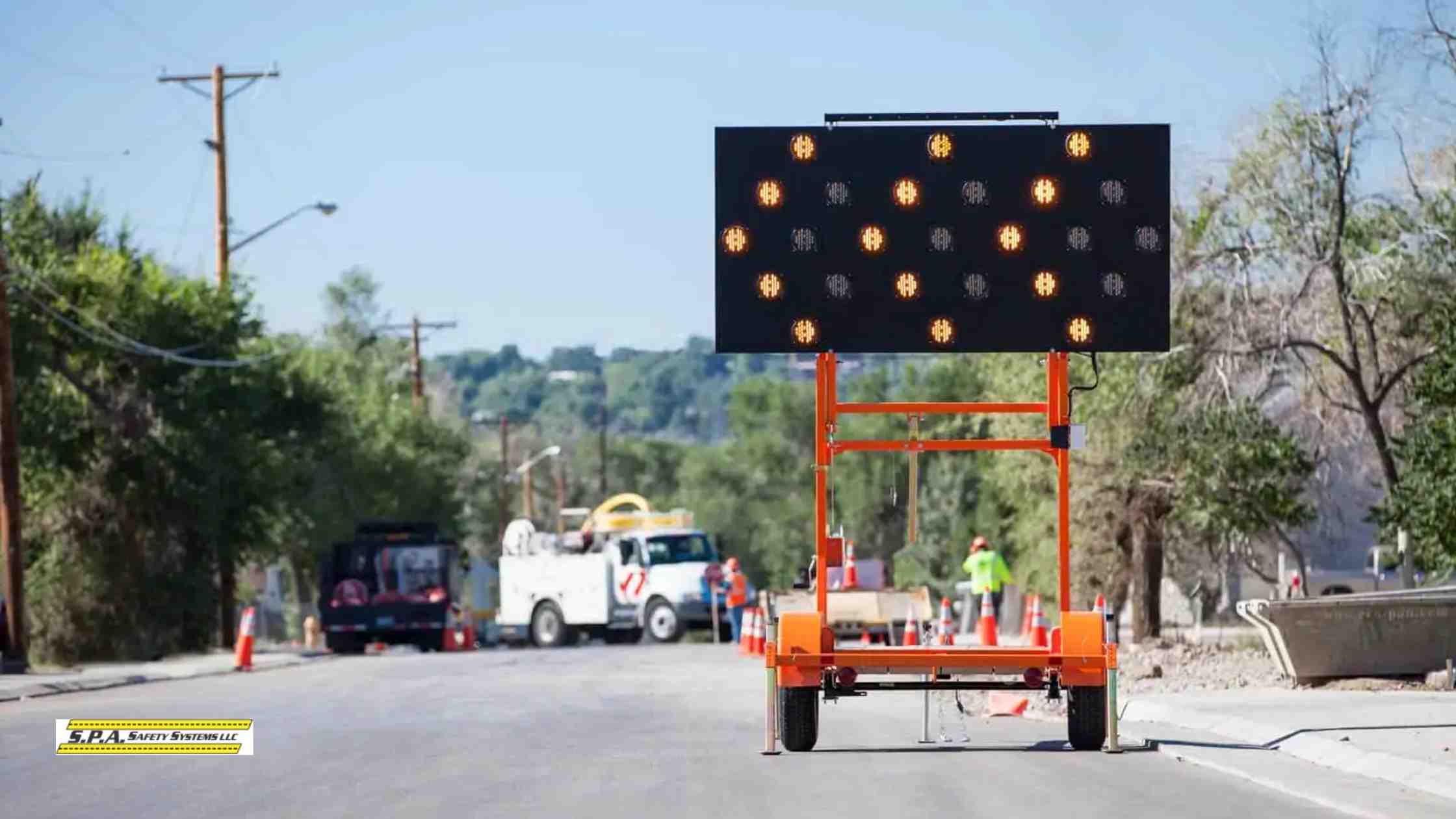A Pre-Dawn Setup: Life Behind the Cones
It’s 4:30 AM on the New Jersey Turnpike. The world is still dark, but your crew is already in motion. The job: set up a work zone before rush hour. Instead of a line of workers lugging traffic cones by hand, a cone truck rolls up. From the safety of the rear deck, two operators quickly and smoothly place cones along the shoulder, one after the other, while the truck moves steadily forward. In less than half the usual time, the lane closure is ready. The crew is off the road before most drivers even see them. The role of cone trucks is undeniable and can’t be overlooked in road safety.
If you’ve ever wondered how large work zones seem to appear “overnight,” the answer often starts with a well-equipped traffic control truck—the unsung hero behind every safe and efficient setup.
What Is a Cone Truck and How Does It Work?
A cone truck (sometimes referred to as a traffic control truck or cone deployment vehicle) is purpose-built for transporting, deploying, and collecting cones and other channelizing devices on highways and city streets.
Key Features
- Cone Deployment Bed: A low, open rear platform where operators stand to place or pick up cones directly onto the road surface.
- Automated or Assisted Deployment: Some models feature mechanical arms or conveyors for hands-free placement.
- High-Capacity Storage: Trucks can carry hundreds of cones, minimizing the need for refills and trips.
- Safety Lighting: Equipped with arrow boards, strobes, and reflective markings to warn approaching drivers.
- Side and Rear Gates: Designed for operator safety, preventing falls, and allowing quick access to the work area.
How it works:
Operators load cones onto the truck’s bed. As the vehicle moves slowly along the work zone, operators—protected by railings and harnesses—deploy or retrieve cones without stepping into live traffic.
Efficient and Safe Cone Deployment: Why It Matters
1. Speed and Precision
Traditional method: Workers walk along the shoulder, carrying stacks of cones. It’s slow, tiring, and risky.
With a cone truck:
- Operators deploy cones at a steady pace, ensuring they match the job’s spacing requirements.
- Fewer errors in placement—cones are evenly spaced, meeting DOT regulations.
- One truck can handle what used to require multiple workers, freeing up your crew for other tasks.
Stat:
According to FHWA studies, automated or assisted cone deployment can reduce setup and breakdown times by 40% or more, thereby decreasing crew exposure to live traffic.
2. Operator Safety
- Reduced Time in Traffic: Operators stay on the truck, out of harm’s way, for most of the process.
- Less Physical Strain: No more repeated bending, lifting, or carrying heavy stacks of cones.
- Fewer Close Calls: Properly deployed cones, placed from a moving vehicle, keep workers away from fast-moving cars.
“After switching to cone trucks, we saw fewer back injuries and a lot less anxiety about being on the road at night.”
— Traffic Safety Supervisor, NJ Contractor
3. Streamlined Work Zone Setup
Fast, accurate cone deployment means:
- Work zones rise and fall more quickly—critical for night jobs or short-duration closures.
- Less disruption to traffic—fewer bottlenecks during setup and removal.
- Reduced labor costs and overtime.
4. Improved Traffic Flow and Public Safety
- Clear, consistent cone lines guide drivers safely through detours and closures.
- Faster setups mean less time spent in partially marked or confusing work zones, which reduces driver mistakes.
Cone Safety Protocols: Best Practices for Every Operator
Operating a cone truck safely requires training and attention to detail. Follow these cone safety protocols for every shift:
- Pre-Trip Inspection:
- Check lights, arrow boards, and backup alarms.
- Inspect the cone bed for debris or hazards.
- Ensure harnesses and guardrails are secure.
- Proper PPE:
- Operators must wear high-visibility vests, gloves, and hard hats at all times.
- Safe Deployment Practices:
- Maintain a steady speed (typically 5–10 mph).
- Communicate clearly via radio with the driver and other crew.
- Never step off the truck while it’s in motion.
- Clear Communication:
- Use standardized hand signals or radios.
- Confirm each operator’s readiness before starting or stopping.
- Monitor Traffic:
- Assign a spotter to watch for approaching vehicles.
- Adjust deployment if traffic patterns change unexpectedly.
Tip: Schedule regular toolbox talks to review protocols and share lessons from the field.
Real-World Results: Time, Money, and Lives Saved
- Labor Savings: With cone trucks, a two-person team can deploy cones for a mile-long closure in under 30 minutes—a task that previously required four people and took an hour or more.
- Fewer Injuries: Contractors using cone trucks report significant reductions in musculoskeletal injuries and near-misses.
- Faster Project Turnarounds: Efficient setups enable more work to be completed in less time, especially crucial for night and weekend jobs.
“Before cone trucks, we dreaded big setups. Now, it’s routine—and safer for everyone.”
— Crew Foreman, Central NJ
Why Every Contractor Needs a Cone Truck
Whether you’re handling highway paving, bridge repairs, or utility work, cone trucks are a must-have for modern traffic control. They:
- Protect your crew by reducing exposure to moving traffic.
- Boost efficiency, saving time and labor costs.
- Deliver DOT-compliant, professional-looking work zones.
- Enhance your reputation with clients and DOT inspectors.
Conclusion: A Small Investment, a Big Safety Difference
In the world of traffic control, small details—like how and where you place your cones—can make the most significant difference. Cone trucks are more than just a piece of equipment; they’re a commitment to safety, efficiency, and professionalism.
If you want to reduce risk, speed up your work zone setups, and give your team the best possible protection, investing in a cone truck is one of the smartest moves you can make.
FAQs: Cone Trucks and Work Zone Setup
- How many cones can a typical cone truck carry?
Most trucks hold between 300 and 600 cones, depending on size and configuration. - Can cone trucks be used for both deployment and pickup?
Yes. Most are designed for both fast and safe pickup, as well as deployment. - Are cone trucks required by DOT regulations?
Not always, but many DOTs and large contractors consider them best practice for large or high-speed projects. - What safety features should I look for?
High-visibility lighting, guardrails, operator harnesses, automated deployment options, and backup alarms are all essential features. - Where can I rent or buy a cone truck?
Vendors like Ver-Mac, Royal Truck & Equipment, and regional safety suppliers offer both purchase and rental options.
Give your crew the protection and efficiency they deserve—make cone trucks part of your following work zone setup.
Contact us for more information.








